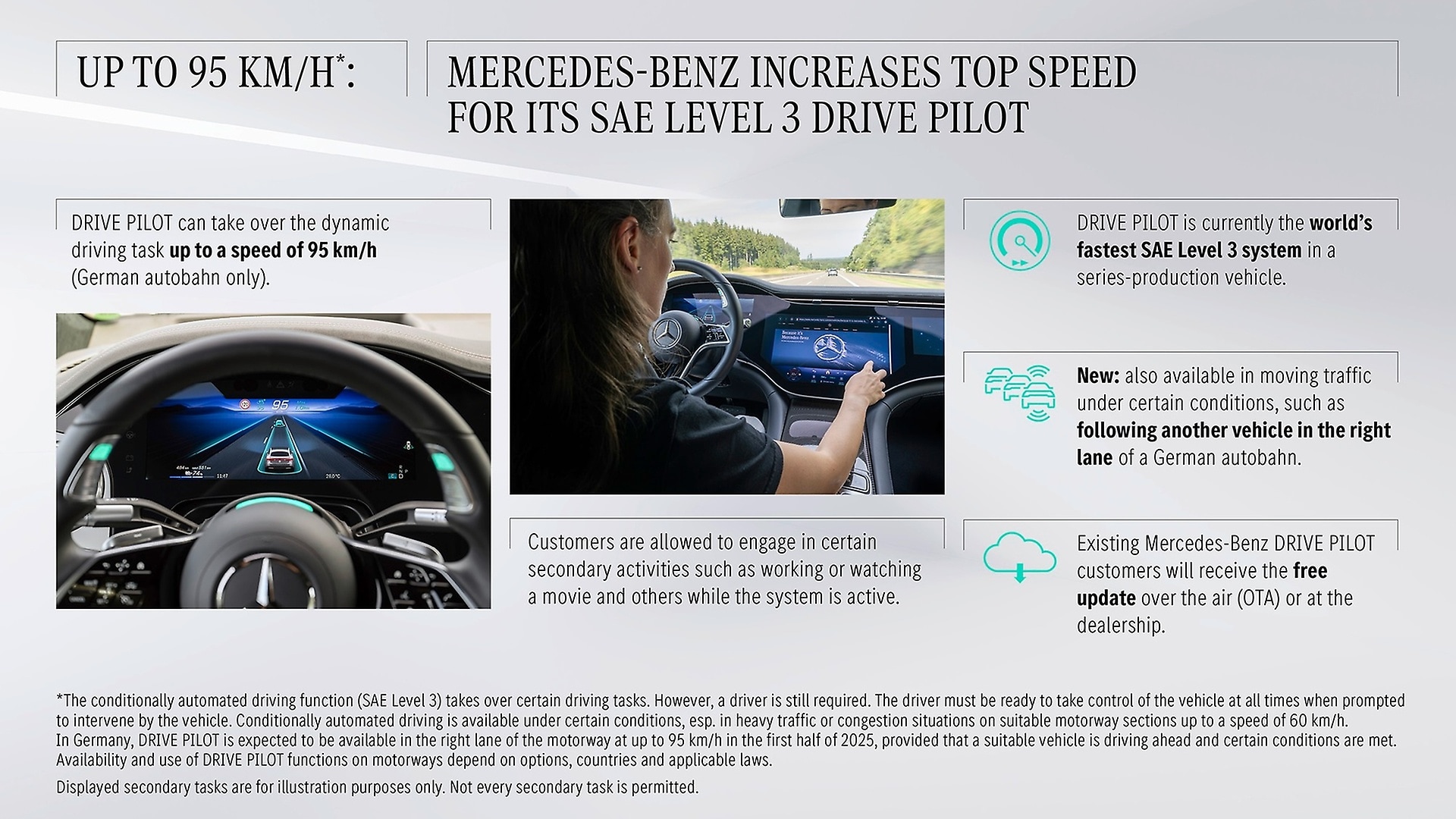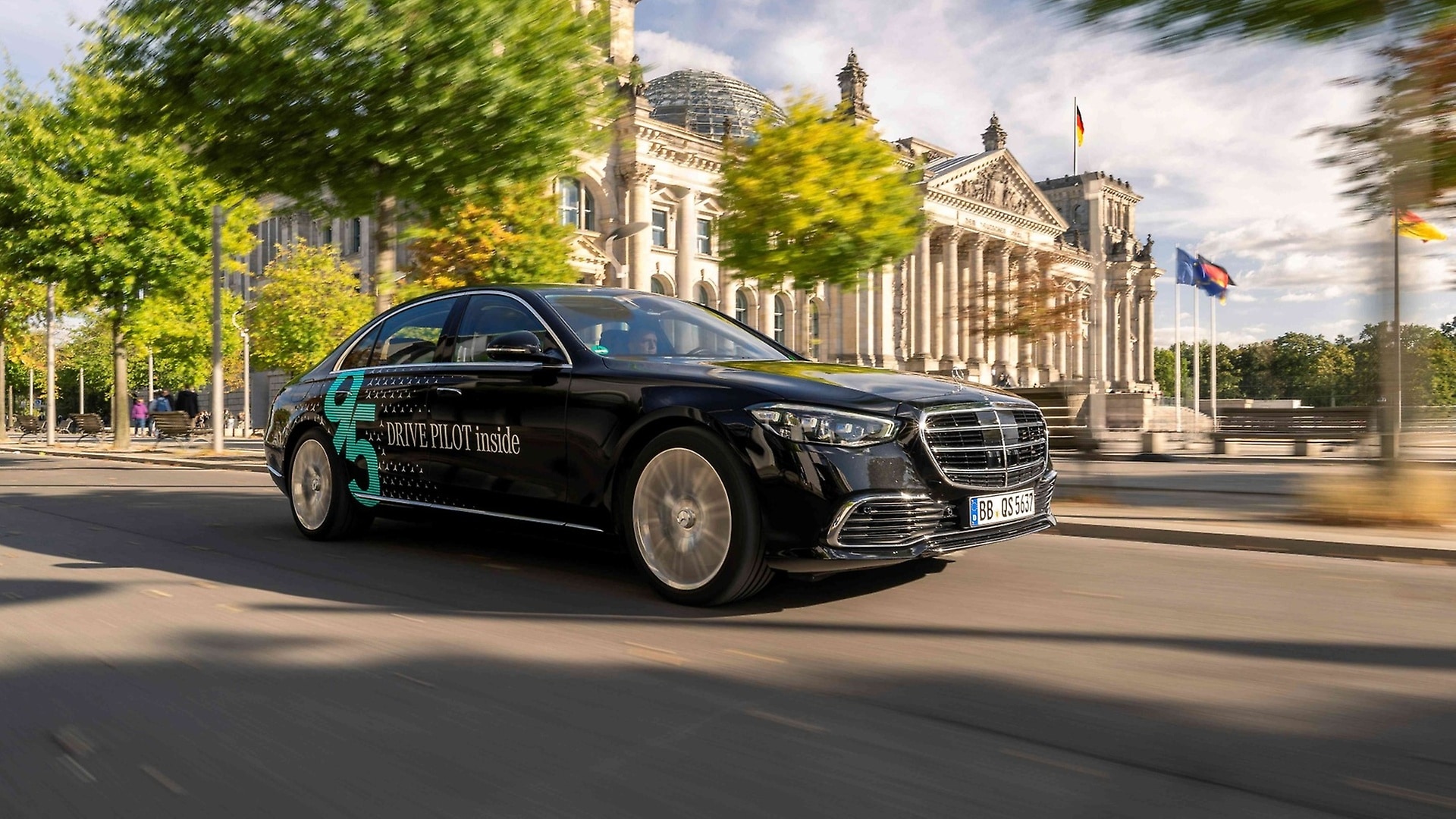Safety remains the top priority for this updated version of DRIVE PILOT. This is why the system has a redundant design, which means that important functions such as electrics, steering and braking are built in twice. If necessary, the system is always able to transfer the driving task back to the person behind the steering wheel. If the driver fails to take back control even after increasingly urgent prompting and expiration of the takeover time (e.g., due to a severe health problem), the system brakes the vehicle to a standstill in a controlled manner while engaging the hazard warning lights. More than 35 sensors such as cameras, radars, ultrasonic sensors, and LiDAR (laser-radar) are used. These work according to different physical principles and thus create redundancies for precise real-time detection of the environment. For SAE Level 3 and higher, the use of LiDAR is essential for Mercedes-Benz for safe automated driving. In combination with a very detailed digital map, a special positioning system ensures that DRIVE PILOT knows exactly on which highway lane the vehicle is driving on – in the range of a few centimetres.
,xPosition=0,yPosition=0.5)



,xPosition=0.8,yPosition=0)
,xPosition=0.5,yPosition=0)